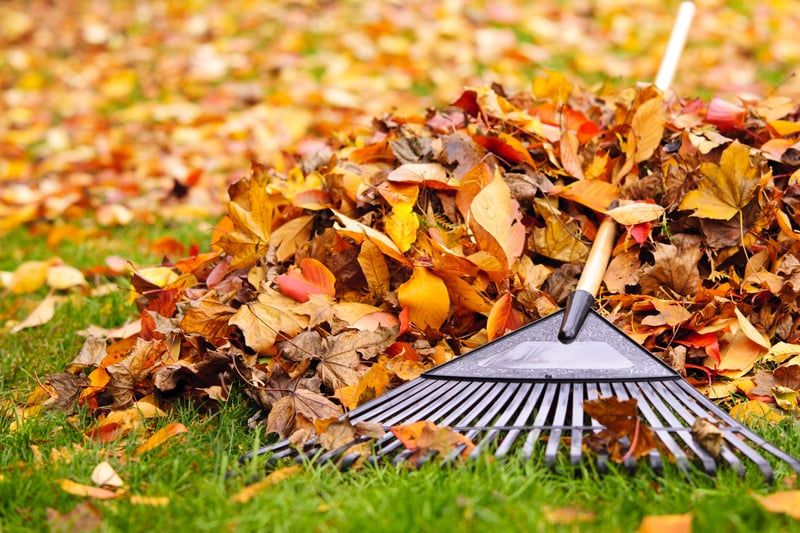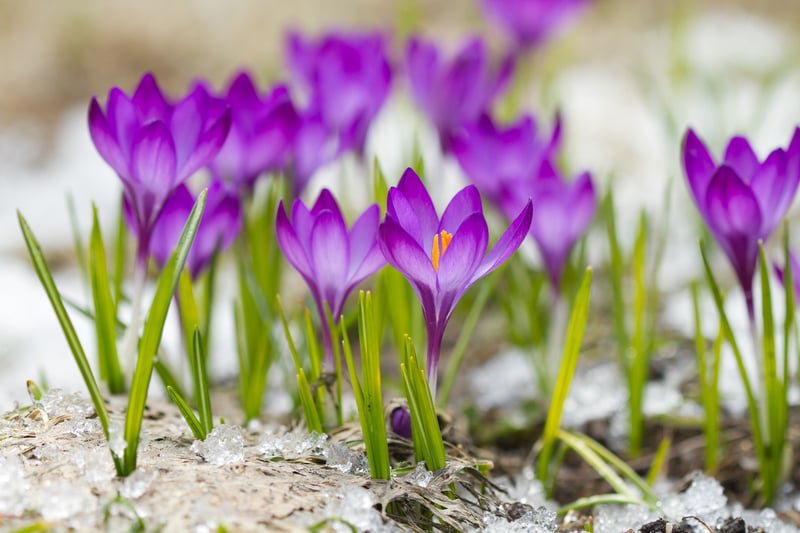We can do lots now as we go into Autumn to prepare the garden onwards for winter and spring wildlife. By doing a few small jobs now, we can help ensure wildlife can survive in the garden over winter and give you an early display of flowers, beautiful for you and very important for pollinators. Here are a few key jobs you can do.
Leaves
Rake leaves off the paths (we don’t want anyone falling!) and makes piles of leaves in corners or the back of borders, anywhere a bit out of the way; hedgehogs and insects love to shelter in them when it’s cold.
If you have plenty, you can also compost some leaves (they make a great mulch) and if you have an open heap, that’ll also become a great shelter in winter.

Twigs and Wood
Whilst you’re tidying up, you can also make piles of twigs. They will provide shelter and warmth for hedgehogs and insects too. You can also fill a plant pot on its side if you don’t have any space in your borders, or borders at all. I keep a few log piles with wood of different sizes around in a corner or 2 at all times of year, they are used by all sorts of insects and solitary bees.
Leave Seedheads
Leave seed heads out for birds to eat, for example, alliums, teasel, honesty, and I have sunflowers and echinacea at mine too.
Nest Boxes
Now is an excellent time to put up nest boxes for birds so they can check them out for next year, and if you have one already, clear it out so that birds can take shelter in the cold if they need it.
If you have a nest box, give it a quick clear out by removing any nesting materials and wash with boiling water. Don’t put it up again all soggy, let it dry out first.
If you feed birds in your garden, please be consistent, as it gets colder they will be reliant on you, so make sure to keep the feeders topped up with enough food.
Plant Bulbs
Plant bulbs now; you can do this in pots or in the ground – you don’t need highly fertilised fresh compost.
If you’re short on space or have a variety of bulbs, you can also ‘Lasagne’ them. This is where you plant a few varieties in layers on top of each other, so you have a continual display throughout spring.
Generally, you put the largest at the bottom going up to the smallest at the top, you can also plant bulbs that will flower at different times, for example, early spring and late spring bulbs in the same pot. This makes great use of space!
If you select some early bloomers like crocus and snowdrops, they’re not only a welcome sight towards the end of winter and early spring but also great for nectar and pollen for pollinators. Muscari are also great for bees.

Planting Perennials
Now is a good time to plant perennials. There’s still plenty you can plant this season, as the soil is warm, so they can build a good root system before it’s too chilly. Herbaceous perennials will die back in winter, but they’ll grow again in spring. They’re often cheaper this time of year because they don’t look as green and full of flowers, but the promise is there, next year they’ll look great!
Some great winter / early bloomers to consider are skimmia japonica, hellebores, cyclamen, daphne, snow drops, winter clematis, winter honeysuckle, camelia, winter heathers, winter aconites, crocus and more. These plants will give a good help to any early pollinators in need and add a bit of a colour to what can be a very bare looking time of year.
Mulch
Now is a great time to put mulch on your borders. It’ll insulate the soil over winter and provide nutrition for the plants come spring.
Sow Wildflower Seeds
Sow wildflower seeds. If you have a perennial wildflower seed mix, Autumn is the perfect time to sow them, as the cold winter helps them germinate. This will give you a great little meadow come summer next year for pollinators to enjoy.
Clean The Pond
As the leaves drop from the trees, keep removing leaves and excess debris from your pond. They add too much nutrition and can also spread disease. If you leave anything you scoop out by the side of the pond for a few days, then any bugs or little creatures can climb back into the water. This is a good time to remove any algae or any other unwanted vegetation as well.
Grass
Now you’ll be out in the garden a little less, you can let your grass grow longer. Try to avoid mowing it now and let it grow to allow more insects to live there, and therefore more food for birds too.
If you would like more information on wildlife gardening, or want to keep up with more of our news, get in touch on either our Facebook page, Instagram, or email

[…] best food for hedgehogs is their natural diet of bugs, so again, leaving a wild part of your garden and planting to attract insects, keeping log piles will give them lots of […]